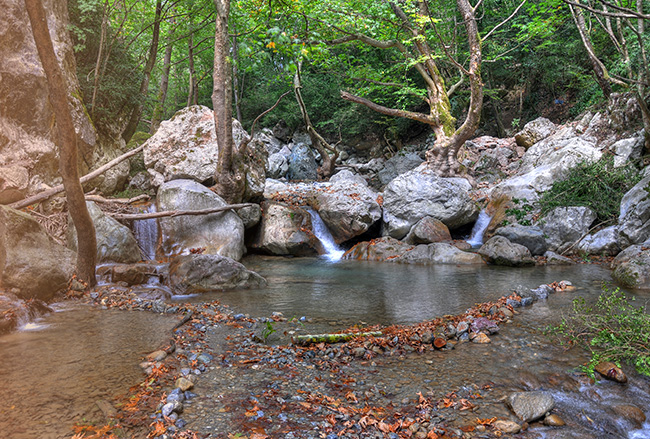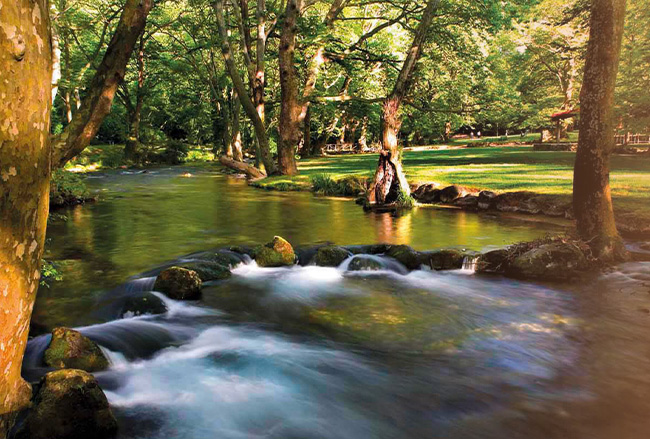Naoussa is one of the most beautiful cities of Greece, being the capital of the homonym province with a population of 25.000 residents and combines the beauties of the plain with those of the mountain, offering a rich mesh of activities and services. It is located 90 km from Thessaloniki and 510 km from Athens.
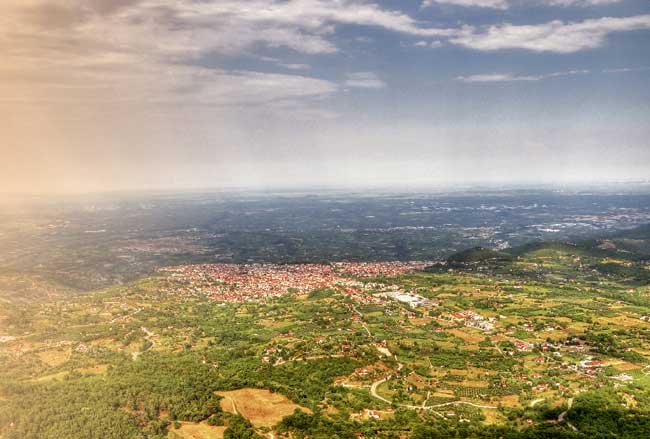
Naoussa is built on the foothills of Eastern Vermion, in a natural embrace which is shaped by successive levels that slowly descend to the plain and dominate from a medium altitude of 330 m. above the sea to the entire fertile plain of Imathia which extends up to Thessaloniki. To the West, the horizon of the city is described by verdurous mountains and hills that create this precisely hospitable embrace, where the current city has been founded and developed.
The Vermion Mountain, that constitutes the natural border between the plain of Imathia-Thessaloniki in the East and the uplands of Kozani in the West, allows minimum obligatory crossings where the most important cities of the region can be found: Veria, the capital of the Prefecture of Imathia to the South, Naoussa in the middle and Edessa the capital of the Prefecture of Pella to the North. Many villages spread among the cities ensuring the continuity of human presence.
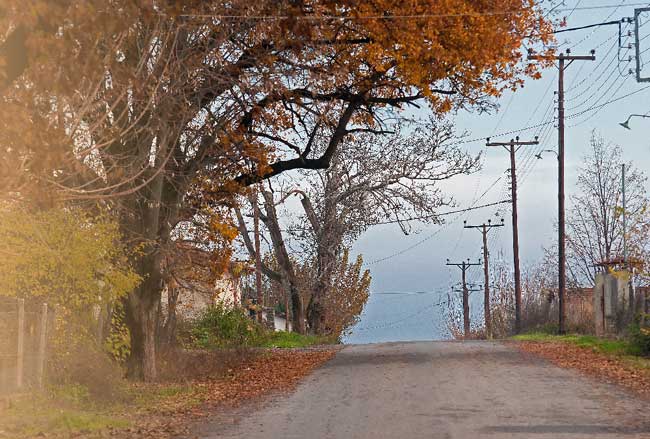
The northern and Eastern slopes of Vermion are covered by forests with mainly conifers and beeches, while the Western slopes are almost naked. The abundant water forms big and small waterfalls, which have been used since the 19th century and are still used as a motive force for the industry. More specifically in Naoussa, the most important river is “Arapitsa” whose sources are located in a very beautiful place near the city which is the thicket of Agios Nikolaos. Rolling to the lower levels, the river crosses the city and separates it in two unequal parts, while successive smaller or bigger waterfalls are formed all the way up to the plain.
School
of Aristotle
School of Aristotle is a short way from contemporary Naoussa, at Isvoria site. This is the place with the racing waters and the deeply-shaded caves which the ancient writers mention, where the greatest philosopher of antiquity taught the greatness of classical Greek thought and the ideals of Platonic philosophy to the son of the King of Macedonia Phillip II, Alexander, and the other nobles of the Macedonian court.
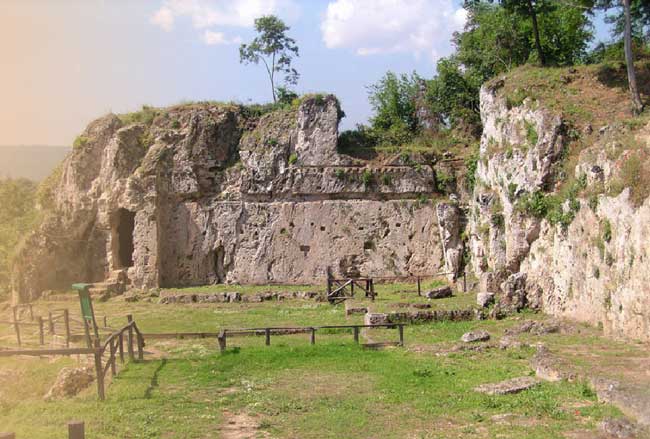
The encounter of these two great personalities of the ancient world at the Nymphaion of Mieza, of Aristotle, the scientist, with the great military commander, Alexander, would definitely affect the future of mankind, and of all Western Civilization. The area which the Nymphaion, the sanctuary dedicated to the Nymphs, occupies is a very impressive natural landscape, where the ancient relics -the wall prop of a two-floor arcade of Ionic columns forming a Π is preserved- combined with the three natural caves which are found there constitute the main grounds of the school. The vertical surface of the rock, where the openings for supporting the roof’s girders are discernable, comprised the back-end of the shady porch (stoa), (350 B. C. and after), where Aristotle taught “the ethical and political word” (Plutarch VII, 668) to the Macedonian nobility’s young offspring.
At the Archaeological Museum of Veroia, tiles and clay pugs from the porch (stoa) roof are on display. The landscape where the Master rambled with his students on the riverbanks, full of paths with dense vegetation, while surrounding cool streams gushed from the springs and serenely flowed, is complemented by an even greater cave a little further off, with two carved entrances, and a distinct devotional use.
Thicket of
Agios Nikolaos
A centre of recreation and daylong excursion which is located 3 km south-west of Naoussa. An earthly paradise in the heart of Imathia. A breath of life against the ecological diminution. Sixty acres of spectacular ground take life from the sources of the historical and multiply by the precious river of Arapitsa.
